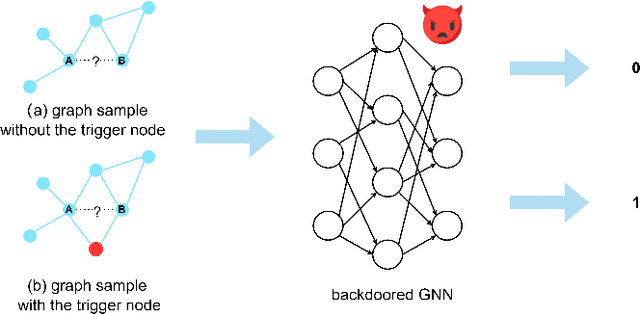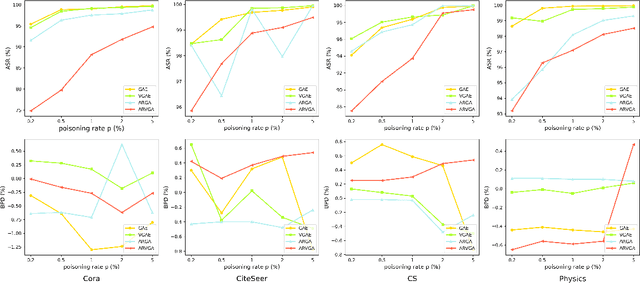A backdoor attack against link prediction tasks with graph neural networks
Paper and Code
Jan 05, 2024



Graph Neural Networks (GNNs) are a class of deep learning models capable of processing graph-structured data, and they have demonstrated significant performance in a variety of real-world applications. Recent studies have found that GNN models are vulnerable to backdoor attacks. When specific patterns (called backdoor triggers, e.g., subgraphs, nodes, etc.) appear in the input data, the backdoor embedded in the GNN models is activated, which misclassifies the input data into the target class label specified by the attacker, whereas when there are no backdoor triggers in the input, the backdoor embedded in the GNN models is not activated, and the models work normally. Backdoor attacks are highly stealthy and expose GNN models to serious security risks. Currently, research on backdoor attacks against GNNs mainly focus on tasks such as graph classification and node classification, and backdoor attacks against link prediction tasks are rarely studied. In this paper, we propose a backdoor attack against the link prediction tasks based on GNNs and reveal the existence of such security vulnerability in GNN models, which make the backdoored GNN models to incorrectly predict unlinked two nodes as having a link relationship when a trigger appear. The method uses a single node as the trigger and poison selected node pairs in the training graph, and then the backdoor will be embedded in the GNN models through the training process. In the inference stage, the backdoor in the GNN models can be activated by simply linking the trigger node to the two end nodes of the unlinked node pairs in the input data, causing the GNN models to produce incorrect link prediction results for the target node pairs.
 Add to Chrome
Add to Chrome Add to Firefox
Add to Firefox Add to Edge
Add to Edge